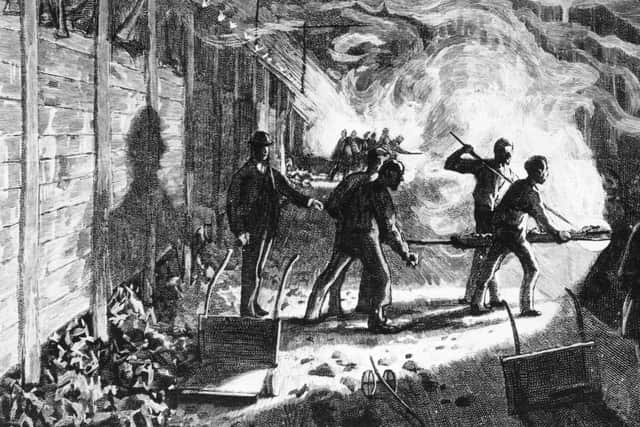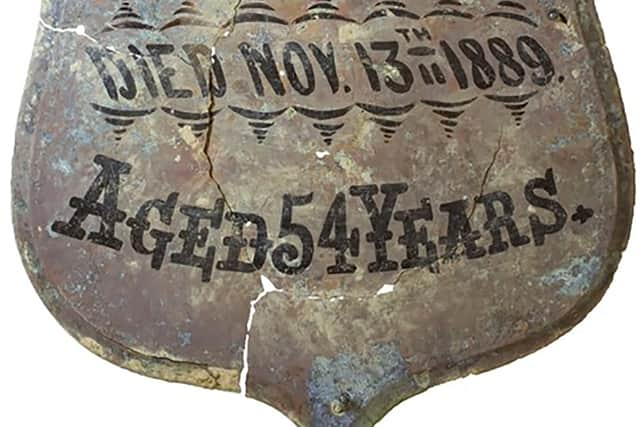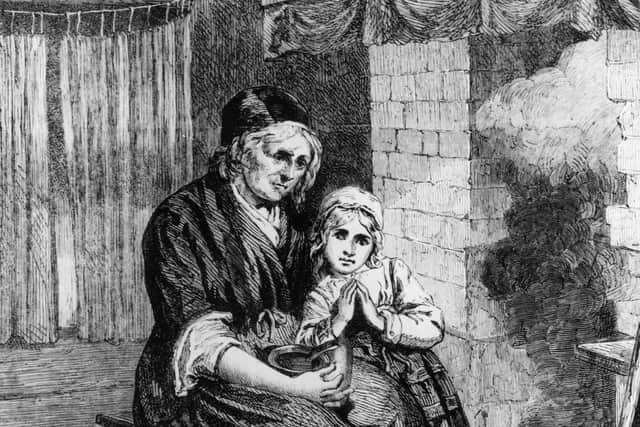Bodies of real life Oliver Twist children ‘worked to death’ in Industrial Revolution unearthed in new research
and live on Freeview channel 276
The bodies of dozens of real life “Oliver Twist” children worked to death in the Industrial Revolution have been unearthed - some of whom were just eight years of age. Their harrowing story lifts the lid on “pauper apprentices” who helped change the world, creating goods using machines instead of hands.
The wretched youngsters have been dubbed the “forgotten children of the past”, providing proof of diseases associated with hazardous labour. These victims were children of paupers given away to work and sent far from home.
Advertisement
Hide AdAdvertisement
Hide AdSome of the children found in Yorkshire were from London. They were treated as badly as those who died during the Great Irish Famine, say scientists.
The children were real David Copperfields and Oliver Twists straight from the novels of Charles Dickens. Beaten, exploited and abused, they never knew what it was to have a full belly or a good night’s sleep.
Their skeletal remains were dug up at an early nineteenth century rural churchyard cemetery in the village of Fewston in North Yorkshire. Lead author Professor Rebecca Gowland, of Durham University, said: “This is the first bioarchaeological evidence. It unequivocally highlights the toll placed on their developing bodies.
“To see direct evidence, written in the bones, of the hardships these children had faced was very moving. It was important to the scientists and the local community that these findings could provide a testimony of their short lives.”
Advertisement
Hide AdAdvertisement
Hide AdThe earliest factories had grown up in the later 18th century around the expanding cotton industry in the north. Conditions of work were grim and factory owners often imposed excessively long hours on their workforces.


Much of the labour was provided by “pauper apprentices”, who were often children below the age of ten. Many of them were orphans sent into factory employment by the Poor Law authorities, often very far from their home parishes.
The bones belonged to over 150 individuals including an unusually large proportion of youngsters, aged between eight and 20. Analysis identified them as being distinctive from the locals and also showing signs of stunted growth and malnutrition.
Prof Gowland’s team and local historians mapped their tragic lives from the grim workhouses of London to the mills, or factories, of the north of England. They were indentured to work long hours as “an expendable and cheap source of labour”, say the researchers.
Advertisement
Hide AdAdvertisement
Hide AdThey were the children of paupers - some sold to their masters so parents would have one less mouth to feed. The Industrial Revolution brought immense prosperity to the British Empire.


It ruled the waves and the global marketplace, dominating trade in cotton, wool and other commodities. But a terrible price was paid by the labourers - many of whom were children.
The study included analysis of teeth to establish gender and those not local to the area. Many samples contained chemicals consistent with London.
Combining examination also highlighted large numbers of illnesses including tuberculosis and respiratory conditions associated with millwork. Other disorders were linked to deprivation, such as rickets, due to a lack of vitamin D or calcium - along with delayed growth.
Advertisement
Hide AdAdvertisement
Hide AdSenior author Prof Michelle Alexander, of York University, said: “We undertook chemical analysis of the bones to study diet and found the apprentices had a lack of animal protein compared to the locals, more on a level with the victims of the Great Irish Famine.”
The bodies have now been reburied in a moving ceremony that involved contributions from the local community, volunteer researchers, scientists and descendants of those excavated. Artwork inspired by the study and an exhibition are on now on permanent display at the Washburn Heritage Centre in Yorkshire.


Spokeswoman Sally Robinson, who led the team of local volunteers, said: “It’s easy to forget the Washburn valley had an industrial past given the beauty of the reservoirs that visitors see today. It was important to us to find out about the children who worked in the mills. They were overlooked in life and treated as a commodity - but we hope we have done them some justice by telling their stories and creating a lasting commemoration.”
The study published in the academic journal PLOS ONE provides compelling testimony of the impact of poverty and factory labour on children’s growth, health and mortality in the past. The Industrial Revolution resulted in rapid urbanisation and profound socio-economic change, with dire consequences for health and well-being.
Advertisement
Hide AdAdvertisement
Hide AdThe shift from a rural, domestic workforce to one that was primarily urban and factory and mining-oriented brought economic benefits. But it resulted in well-documented increases in population density, inadequate housing and sanitation, air pollution and poor working conditions.
Excavations from Fewston provide a unique opportunity to explore the physiological impact on children living at the time. The earliest factories had grown up in the later 18th century around the expanding cotton industry in the north.
In 1800 some 20,000 apprentices were employed in cotton mills. In the next decade as many as a fifth of workers in the cotton industry were children under the age of 13. In 1802 the Health and Morals of Apprentices Act was passed, the very first piece of factory legislation.
Its promoter was Sir Robert Peel, an MP and father of the future prime minister who himself was a wealthy factory owner. He was concerned to see that humane standards of treatment were established for the the increasing numbers of ‘pauper apprentices’ employed in factories like his own.
Advertisement
Hide AdAdvertisement
Hide AdPeel’s Act applied to all apprentices up to the age of 21. It prevented apprentices working at night and for longer than 12 hours a day, and made provision for them to receive some basic education.
The excavation was funded by The National Lottery Heritage Fund, which supports a wide range of heritage projects across the UK.
Comment Guidelines
National World encourages reader discussion on our stories. User feedback, insights and back-and-forth exchanges add a rich layer of context to reporting. Please review our Community Guidelines before commenting.
